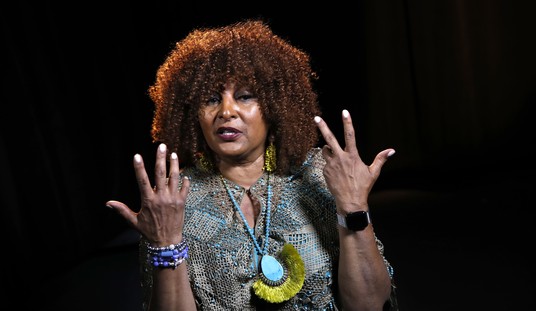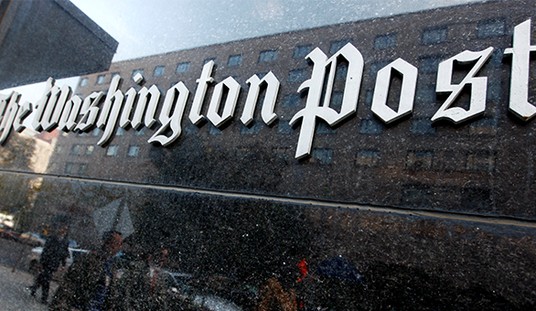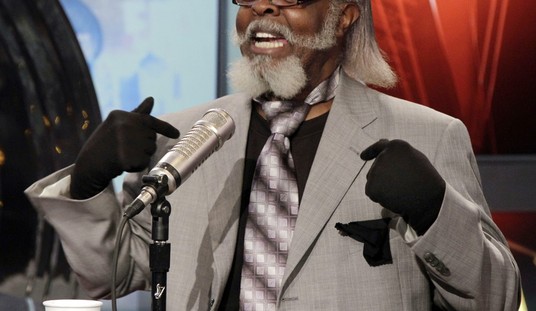A week ago a piece in the Atlantic argued that the actual number of infections in Iran could be far higher than the official numbers claimed. A subsequent report in the Washington Post revealed that in the city of Qom, which is where the infection got started in Iran, burial pits were being dug that were so large they could be seen from space. Today, Iranian state television issued a dire warning from a medical doctor: If people don’t comply with health advisories, millions will die.
In announcing the new warning, the Iranian state TV journalist, Dr. Afruz Eslami, cited a study by Tehran’s prestigious Sharif University of Technology, which offered three scenarios: If people cooperate fully now, Iran will see 120,000 infections and 12,000 deaths before the outbreak is over; if they offer medium cooperation, there will be 300,000 cases and 110,000 deaths.
But if people fail to follow any guidance, it could collapse Iran’s already-strained medical system, Eslami said. If the “medical facilities are not sufficient, there will be 4 million cases, and 3.5 million people will die,” she said.
Eslami did not elaborate on what metrics the study used, but even reporting it on Iran’s tightly controlled state media represented a major change for a country whose officials had for days denied the severity of the crisis.
That last figure is probably an exaggeration but the fact that state TV is going this far suggests Iran is getting very worried about the situation. There may be very good reason for that. Today, Time magazine reports on word leaking out from Iran that the medical system is already over-stressed.
“My uncle, who is a doctor, called me in tears from his hospital saying that he can’t cope anymore,” a laboratory scientist working at one of five public hospitals in Qom, told TIME by phone on March 14. Protective gear was lacking during the first phase of the crisis, she said, “so much so that for the first week the doctors and nurses only used regular masks—no gloves, no gowns, nothing else.”…
“People are dying left and right here. That’s the case in all of our hospitals in Qom,” said the laboratory assistant. Like other medics TIME interviewed, she asked to remain anonymous so she could speak freely, alleging that Iranian authorities are tapping some hospital staffers’ phones…
Officially, COVID-19 has now sickened almost 15,000 Iranians, but medical staff in Tehran say those numbers are a significant underestimate. “There is absolutely no doubt that the number of sick people is much higher,” a pulmonologist at one of the capital’s leading private hospitals told TIME on his return to work from two weeks in self-quarantine after contracting the disease from a patient. “Realistically, at this point, you need to change the reported sick cases to 1 million.”
Despite all of this bad news, many in Iran continue to behave as if there is nothing to worry about. This image shows a bazaar in Tehran.
اين عكس دقيقا امروز است، بله امروز، از بازار بزرگ تهران و واقعيتش من حتى ذرهای هم این مردم را مقصر نمیدانم.
این کارنامه شکست همه سیاست ها و شعارها و برنامههای ستاد ملی #کرونا و دولت روحانی در مقابله با کرونا است .#كرونا_ما_را_شکست_میدهد pic.twitter.com/b0cUdzlqPn— سيامک قاسمى (@SiamakGhassemi) March 17, 2020
The NY Times reports the situation in Iran has been a disaster in part because the Rouhani government has been in an ongoing battle with the military over how to respond to the spread of the virus.
In a closed meeting on Friday, the two sides clashed on strategy, according to four people with knowledge of the meeting.
Mr. Rouhani demanded that the armed forces adhere to his command. The generals refused and said Mr. Khamenei had authorized them to act independently…
Apparently ignoring Mr. Rouhani, General Bagheri said on Friday that the military would severely restrict traffic, close businesses and clear people off the streets in Tehran and at least 11 provinces. He said volunteers attached to the armed forces would survey every Iranian household to identify potentially infected patients and set up field hospitals for screening and treatment.
Barely two days later, Mr. Rouhani said there would be no shutting of cities, no lockdowns, no forced closure of businesses.
“This rumor that in Tehran or other cities businesses and shops will be quarantined is not happening,” Mr. Rouhani said. He also berated governors who had sounded alarms that their provinces should be cordoned off.
Finally, in addition to the ongoing battle over who is in charge, there is also a religious component of this that has proven difficult to manage. Qom, where the virus first spread, is a spiritual center in Iran. Last week Ayatollah Khamenei belatedly order two major shrines in Qom to be shut down to prevent the spread of the virus. Those shrines were blocked off Monday, but by Monday night religious hardliners broke through the barricades and clashed with security.
At least 25 people arrested (more to come) following clashes btw police and protesters in holy cities of Qom and Mashhad last night. Protesters were angry by seeing the closure of the shrines. They argue shrines must remain open, those fearful of spread of Covid19 don’t visit’em pic.twitter.com/ijNh01MW84
— Fereshteh Sadeghi فرشته صادقی (@fresh_sadegh) March 17, 2020
Iran finally shuts down Shia shrines today as coronavirus peaked in those cities.
Mobs of ultra hardliners break the doors in Mashhad & Qom, bypass the police & storm the shrines.
This appears organized.#کرونا https://t.co/ktb95Nezv9— Farnaz Fassihi (@farnazfassihi) March 16, 2020
3/ Mobs in Mashhad storming closed shrines clash with security forces trying to stop them.
Today the governor of Mashhad called for Rouhani to quarantine the city because of critical number of infected & dead from coronavirus. Rouhani has so far refused restriction on movement. pic.twitter.com/8JBYhh48Ws— Farnaz Fassihi (@farnazfassihi) March 16, 2020
All of this is apparently being organized/encouraged by religious leaders who are telling people the WHO can’t be trusted because they are Jews.
WATCH: “coronavirus antisemitism”
Cleric in Qom, Iran (Covid-19 epicenter in Iran) is angry a shrine is closed and addresses a crowd.
He says they shouldn’t follow @WHO, as they are a bunch of infidels and Jews! ✡️
— Sia Kordestani 🦁 (@SiaKordestani) March 17, 2020
In Iran, even the Ayatollah can’t close shrines. I very much doubt the word of a doctor on TV is going to change things.








Join the conversation as a VIP Member